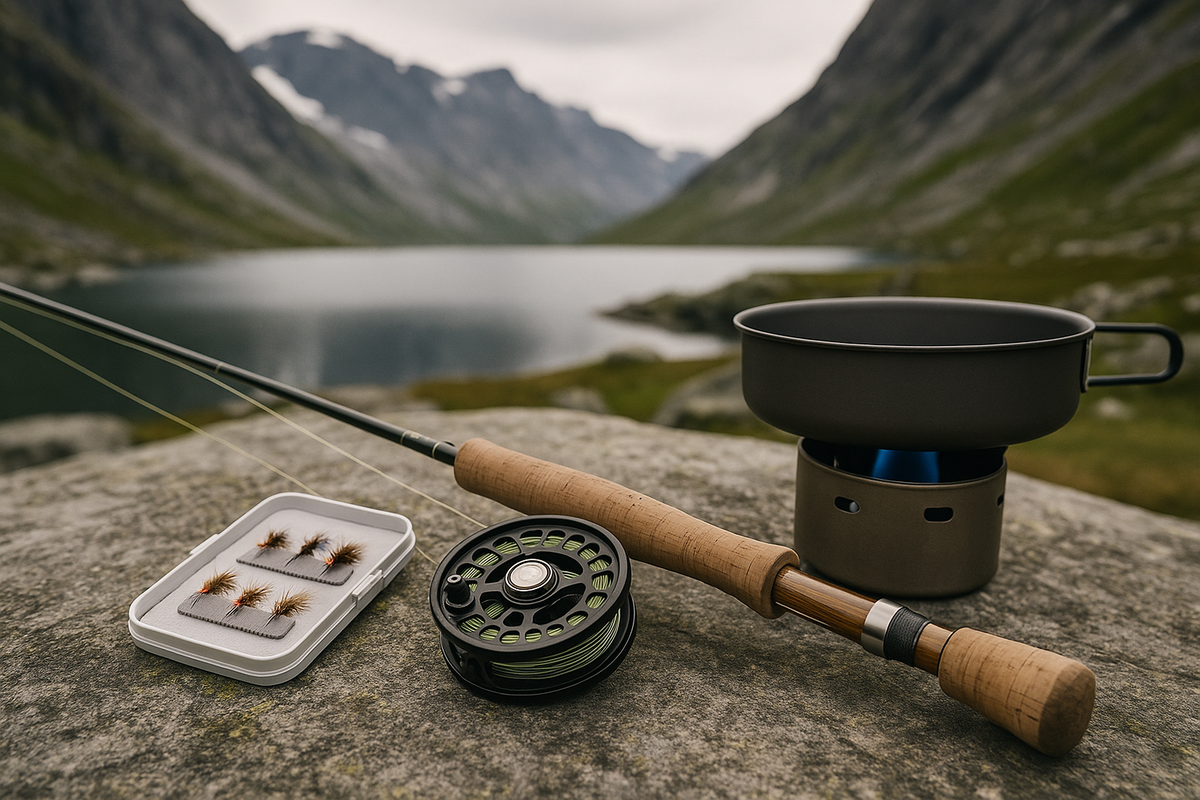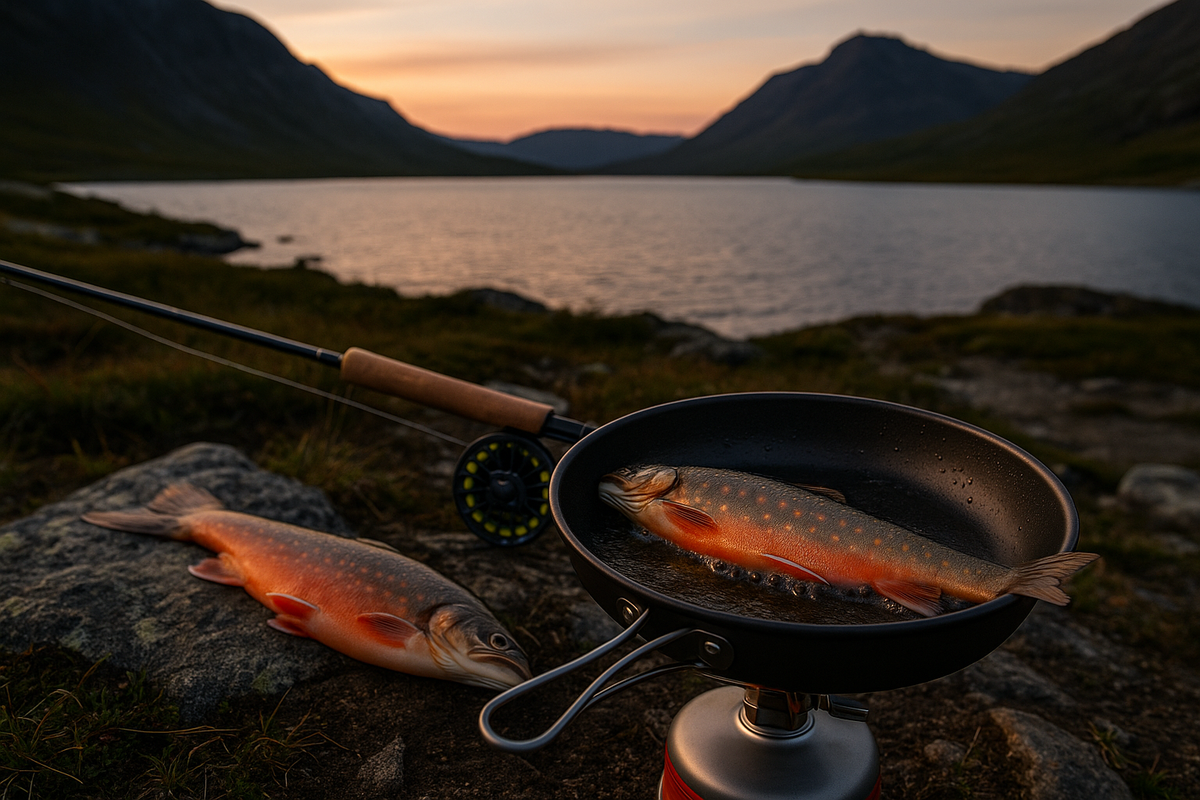Fly fishing in the mountains: catching Arctic char above the tree line
Fly fishing high in the mountains of Norway is a special art form and a real culinary adventure. Picture yourself standing with a light fly rod by a crystal-clear lake above the tree line after a thrilling hike, reeling in a beautiful Arctic char that you'll cook on a tiny titanium stove under the open sky in the evening. It's the perfect scenario for outdoor gourmets.

So, why is Jotunheimen National Park such a great spot for mountain fly fishing?
Jotunheimen is the place to go if you want to catch some Arctic char and trout above the tree line. The lakes of Finsvatnet, Glitterheim and Bessvatnet are great for fly fishing. These places are surrounded by stunning mountain scenery and have clear water where you can easily see the fish.
What licence do I need to fish in the mountains of Norway?
If you want to fish in national parks and other natural areas in Norway, you'll need to buy a licence (fiskekort). You can buy it online at inatur.no or at tourist information centres and DNT huts. The cost usually varies from 100 to 300 NOK per day.
Do you know how I can make my mountain fly fishing tackle as light as possible?
Choose compact and ultra-light tackle – fly fishing kits weighing up to 300 grams, such as class 4–5, are ideal. Use minimalist fly boxes with a few effective flies and folding or telescopic rods.

Which animals are most often spotted around the mountain lake?
When you're out and about in the mountains, you might spot reindeer, moose and foxes. You'll also see birds like golden eagles and white-tailed eagles. Just remember to keep your distance and don't make a noise, and you'll have a great time fishing without any bother.
Which campsites and huts are best for fly fishing?
The DNT Gjendesheim, Glitterheim and Finsehytta huts are perfect for a comfortable stopover during mountain fishing. You can leave your extra kit there, spend the night and restock your supplies before heading out light to remote fishing lakes.
What should you bear in mind when using the catch-and-cook approach on the route?
Cooking fish straight away after catching it keeps all the flavour and makes your camp dinner one to remember. Take a minimalist titanium spirit stove and a small frying pan or pot to easily cook your fresh catch. Cook it on the barbie with just a bit of seasoning to keep the natural flavour of the fish.
What are the rules of Allemannsretten when fishing and cooking in nature?
With Allemannsretten, you can fish anywhere as long as you've got a licence, and you can cook in nature too, as long as you don't damage the environment. Make sure you leave your fishing spots as clean as you found them, and don't damage any plants. Take all your rubbish with you, too.
What tips on water filtration are useful for anglers when they're out on the trail?
When it comes to water filtration, it's best to use portable filters like Sawyer or Katadyn, or disinfection tablets. This means you can safely drink and use water from any mountain lake or stream for cooking.
Mountain fly fishing in Norway's national parks is a great mix of active recreation and culinary pleasure. Tackle that doesn't go to waste, fish that are out of this world and cooking your fresh catch out in the open air will make your trip one to remember.
Have you ever caught Arctic char or trout above the tree line? Let us know your best spots, recipes and photos in the comments! The best stories and photos will be published in our catalogue, which will then inspire other anglers to get out there and have some new culinary adventures in the great outdoors!






2 comments
Log in to leave a comment